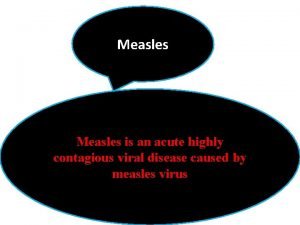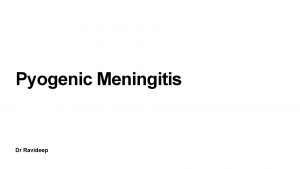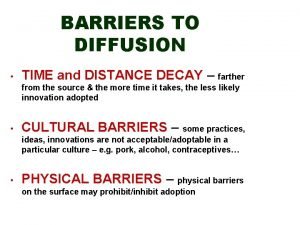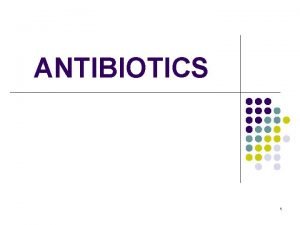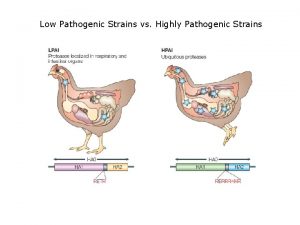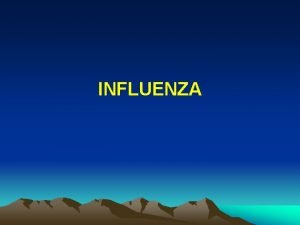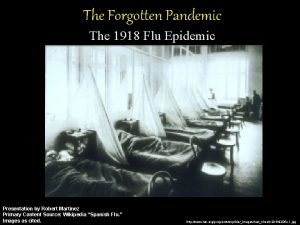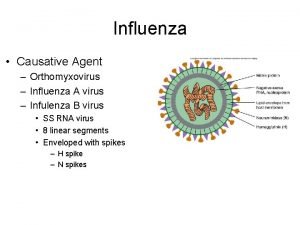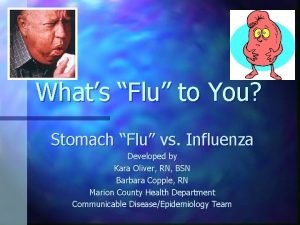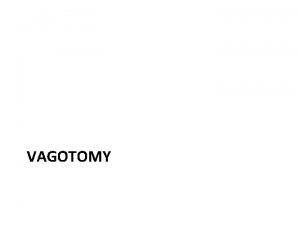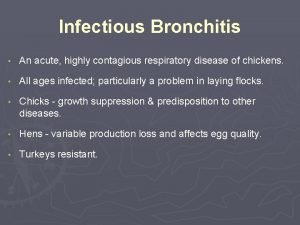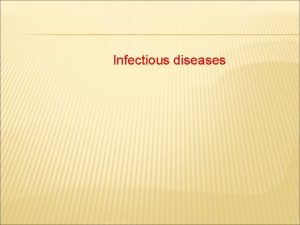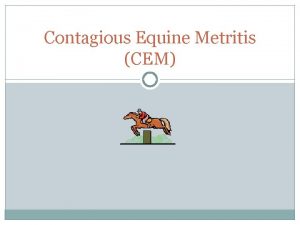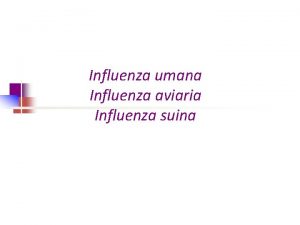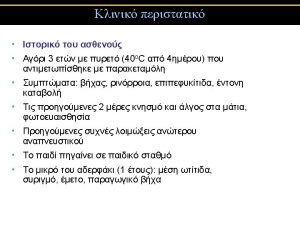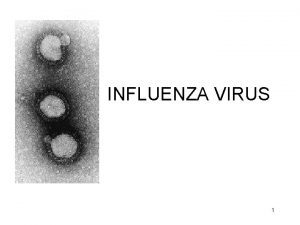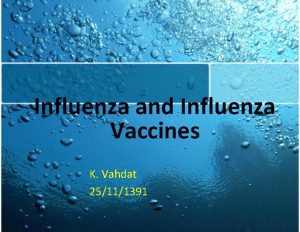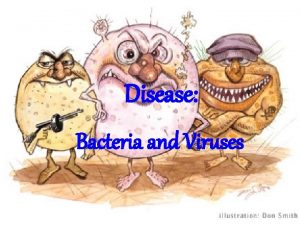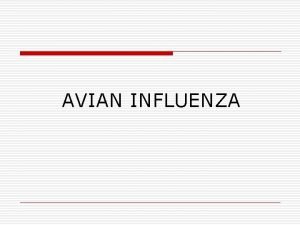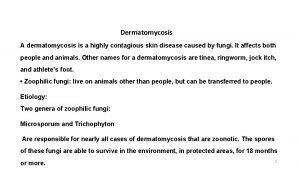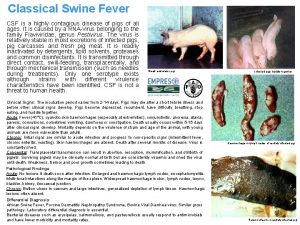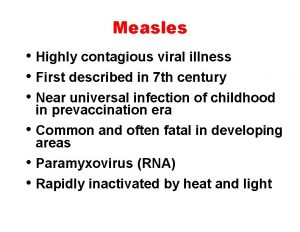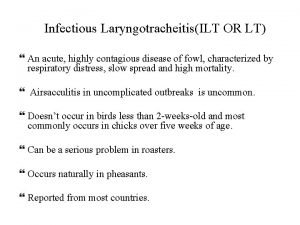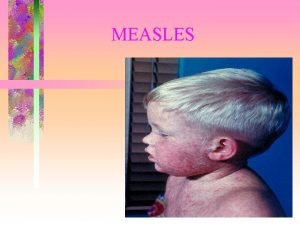Influenza Overview It is a highly contagious disease



















































- Slides: 51


Influenza Overview • • It is a highly contagious disease It is a disease of the respiratory system Can affect people of all ages People most susceptible are the elderly, small children and immuno-compromised • Complications include pneumonia, bronchitis, nose and ear infection. ﻣﺮکﺰ ﻣﺪیﺮیﺖ ﺑیﻤﺎﺭیﻬﺎ ﺍﺩﺍﺭﻩ ﺑیﻤﺎﺭیﻬﺎی ﻗﺎﺑﻞ پیﺸگیﺮی ﺑﺎ ﻭﺍکﺴﻦ ﻭﺍﺣﺪ آﻨﻔﻠﻮآﻨﺰﺍ

Influenza Overview • 10 -20% of the US population come down with the flu each year. • 250, 000 people die world wide. • Vaccines are the first line of defense. • Antiviral medication is also available ﻣﺮکﺰ ﻣﺪیﺮیﺖ ﺑیﻤﺎﺭیﻬﺎ ﺍﺩﺍﺭﻩ ﺑیﻤﺎﺭیﻬﺎی ﻗﺎﺑﻞ پیﺸگیﺮی ﺑﺎ ﻭﺍکﺴﻦ ﻭﺍﺣﺪ آﻨﻔﻠﻮآﻨﺰﺍ


Spanish Influenza 1918 • The most devastating flu pandemic the world had seen. • Named Spanish influenza because of the severe loss in Spain. 8 million people died in May 1918. • In the U. S, first signs were seen in early spring in military camps in Kansas, but received little attention because of the war in Europe. ﻣﺮکﺰ ﻣﺪیﺮیﺖ ﺑیﻤﺎﺭیﻬﺎ ﺍﺩﺍﺭﻩ ﺑیﻤﺎﺭیﻬﺎی ﻗﺎﺑﻞ پیﺸگیﺮی ﺑﺎ ﻭﺍکﺴﻦ ﻭﺍﺣﺪ آﻨﻔﻠﻮآﻨﺰﺍ

Spanish Influenza 1918 • By the fall, hospitals were overwhelmed with patients, many of whom were dying 23 days after exhibiting symptoms. • The pandemic was extremely sudden. No one was prepared. In the US, the average life span was reduced by 10 years. • ~675, 000 American deaths. ﻣﺮکﺰ ﻣﺪیﺮیﺖ ﺑیﻤﺎﺭیﻬﺎ ﺍﺩﺍﺭﻩ ﺑیﻤﺎﺭیﻬﺎی ﻗﺎﺑﻞ پیﺸگیﺮی ﺑﺎ ﻭﺍکﺴﻦ ﻭﺍﺣﺪ آﻨﻔﻠﻮآﻨﺰﺍ

Spanish Influenza 1918 • 40 million people worldwide were dead from the flu. • Most striking was the high morbidity of young people (20 -40 years old). • Millions of hospitalizations, secondary bacterial pneumonias, and middle ear infections in infants and young children. • Caused by H 1 N 1 strain that resembled most closely swine origin. ﻣﺮکﺰ ﻣﺪیﺮیﺖ ﺑیﻤﺎﺭیﻬﺎ ﺍﺩﺍﺭﻩ ﺑیﻤﺎﺭیﻬﺎی ﻗﺎﺑﻞ پیﺸگیﺮی ﺑﺎ ﻭﺍکﺴﻦ ﻭﺍﺣﺪ آﻨﻔﻠﻮآﻨﺰﺍ

1957 Asian Influenza—A(H 2 N 2) • Re-assortment of avian and human strains. • Re-assortment thought to have occurred in pigs. • 70, 000 deaths in America. First identified in China in February 1957, it spread to the US by June 1957 ﻣﺮکﺰ ﻣﺪیﺮیﺖ ﺑیﻤﺎﺭیﻬﺎ ﺍﺩﺍﺭﻩ ﺑیﻤﺎﺭیﻬﺎی ﻗﺎﺑﻞ پیﺸگیﺮی ﺑﺎ ﻭﺍکﺴﻦ ﻭﺍﺣﺪ آﻨﻔﻠﻮآﻨﺰﺍ

1968 Hong Kong Influenza—A(H 3 N 2) • Also re-assortment of avian and human strains. • 34, 000 deaths in America. Started in Hong Kong in early 1968 and spread to America by the end of the year. • A(H 3 N 2) is still circulating in human population today. ﻣﺮکﺰ ﻣﺪیﺮیﺖ ﺑیﻤﺎﺭیﻬﺎ ﺍﺩﺍﺭﻩ ﺑیﻤﺎﺭیﻬﺎی ﻗﺎﺑﻞ پیﺸگیﺮی ﺑﺎ ﻭﺍکﺴﻦ ﻭﺍﺣﺪ آﻨﻔﻠﻮآﻨﺰﺍ

Recorded Influenza Pandemics H 1 10 20 H 2 10 10 30 years 19 events with pandemic H 3 (from ducks) potential; 12 since December 2003 37 years? 2005 1: epidemic, 2: probable pandemic, 3: pandemic Potter, C. W: Textbook of Influenza by Nichols, Webster, Hay, Blackwell Science 1998 ﻣﺮکﺰ ﻣﺪیﺮیﺖ ﺑیﻤﺎﺭیﻬﺎ ﺍﺩﺍﺭﻩ ﺑیﻤﺎﺭیﻬﺎی ﻗﺎﺑﻞ پیﺸگیﺮی ﺑﺎ ﻭﺍکﺴﻦ ﻭﺍﺣﺪ آﻨﻔﻠﻮآﻨﺰﺍ

Reassortment (in Animals and Humans) Migratory birds Avian Virus Human virus Reassortment in humans Avian Virus Reassortment in Swine ﻣﺮکﺰ ﻣﺪیﺮیﺖ ﺑیﻤﺎﺭیﻬﺎ ﺍﺩﺍﺭﻩ ﺑیﻤﺎﺭیﻬﺎی ﻗﺎﺑﻞ پیﺸگیﺮی ﺑﺎ ﻭﺍکﺴﻦ ﻭﺍﺣﺪ آﻨﻔﻠﻮآﻨﺰﺍ Human Pandemic Strain

• is an infectious disease caused by type A strains of influenza virus • The disease in birds has two forms; - Mild illness - Highly pathogenic avian influenza”, which was first recognized in Italy in 1878, is rapidly fatal, with a mortality approaching 100%. • Birds can die on the same day that symptoms first appear ﻣﺮکﺰ ﻣﺪیﺮیﺖ ﺑیﻤﺎﺭیﻬﺎ ﺍﺩﺍﺭﻩ ﺑیﻤﺎﺭیﻬﺎی ﻗﺎﺑﻞ پیﺸگیﺮی ﺑﺎ ﻭﺍکﺴﻦ ﻭﺍﺣﺪ آﻨﻔﻠﻮآﻨﺰﺍ

• Infected birds shed virus in saliva, nasal secretions and feces. • spread among susceptible birds when they have contact with contaminated excretions. • The viruses do not usually directly infect humans • Most cases of infection in humans have resulted from contact with infected poultry or contaminated surfaces. ﻣﺮکﺰ ﻣﺪیﺮیﺖ ﺑیﻤﺎﺭیﻬﺎ ﺍﺩﺍﺭﻩ ﺑیﻤﺎﺭیﻬﺎی ﻗﺎﺑﻞ پیﺸگیﺮی ﺑﺎ ﻭﺍکﺴﻦ ﻭﺍﺣﺪ آﻨﻔﻠﻮآﻨﺰﺍ

1997 : In Hong Kong, avian influenza A (H 5 N 1) This was the first time an avian influenza virus had ever been found to transmit directly from birds to humans; - 18 people were hospitalized, - 6 of them died. - authorities killed about 1. 5 million chickens ﻣﺮکﺰ ﻣﺪیﺮیﺖ ﺑیﻤﺎﺭیﻬﺎ ﺍﺩﺍﺭﻩ ﺑیﻤﺎﺭیﻬﺎی ﻗﺎﺑﻞ پیﺸگیﺮی ﺑﺎ ﻭﺍکﺴﻦ ﻭﺍﺣﺪ آﻨﻔﻠﻮآﻨﺰﺍ

• 1998 -99 : in China H 9 N 2 Several additional human infections were reported. • 1999: In Hong Kong, avian influenza A H 9 N 2 • - were confirmed in 2 children. • - Both patients recovered, and no additional cases were confirmed. • - Poultry was the source of infection and the main mode of transmission was from bird to human. ﻣﺮکﺰ ﻣﺪیﺮیﺖ ﺑیﻤﺎﺭیﻬﺎ ﺍﺩﺍﺭﻩ ﺑیﻤﺎﺭیﻬﺎی ﻗﺎﺑﻞ پیﺸگیﺮی ﺑﺎ ﻭﺍکﺴﻦ ﻭﺍﺣﺪ آﻨﻔﻠﻮآﻨﺰﺍ

2003 : Two cases of avian influenza A (H 5 N 1); -Infection occurred among members of a Hong Kong family that had traveled to China. - One person recovered, the other died. How or where these 2 family members were infected was not determined. ﻣﺮکﺰ ﻣﺪیﺮیﺖ ﺑیﻤﺎﺭیﻬﺎ ﺍﺩﺍﺭﻩ ﺑیﻤﺎﺭیﻬﺎی ﻗﺎﺑﻞ پیﺸگیﺮی ﺑﺎ ﻭﺍکﺴﻦ ﻭﺍﺣﺪ آﻨﻔﻠﻮآﻨﺰﺍ

Beginning in mid-2003 • eight countries in south-east Asia experienced the largest and most severe outbreaks of highly pathogenic avian influenza in poultry. • The causative agent, the H 5 N 1 strain of Influenzavirus A, has since become endemic in domestic birds in several of the initially affected countries. ﻣﺮکﺰ ﻣﺪیﺮیﺖ ﺑیﻤﺎﺭیﻬﺎ ﺍﺩﺍﺭﻩ ﺑیﻤﺎﺭیﻬﺎی ﻗﺎﺑﻞ پیﺸگیﺮی ﺑﺎ ﻭﺍکﺴﻦ ﻭﺍﺣﺪ آﻨﻔﻠﻮآﻨﺰﺍ

From July 2005 to the end of the year • The virus expanded its geographical presence in birds beyond the initial focus in Asia. • Country reported their first outbreaks, in both wild and domestic birds, included : Russian Federation, Kazakhstan, Turkey, Romania Ukraine. Croatia and Mongolia reported detection of the virus in wild birds only. ﻣﺮکﺰ ﻣﺪیﺮیﺖ ﺑیﻤﺎﺭیﻬﺎ ﺍﺩﺍﺭﻩ ﺑیﻤﺎﺭیﻬﺎی ﻗﺎﺑﻞ پیﺸگیﺮی ﺑﺎ ﻭﺍکﺴﻦ ﻭﺍﺣﺪ آﻨﻔﻠﻮآﻨﺰﺍ

Beginning in February 2006 • the geographical presence of the virus in birds expanded again, • This time dramatically: between then and early April 2006, 32 countries, located in Africa, Asia, Europe and the Middle East, had reported their first cases of infection in wild or domestic birds, or both. ﻣﺮکﺰ ﻣﺪیﺮیﺖ ﺑیﻤﺎﺭیﻬﺎ ﺍﺩﺍﺭﻩ ﺑیﻤﺎﺭیﻬﺎی ﻗﺎﺑﻞ پیﺸگیﺮی ﺑﺎ ﻭﺍکﺴﻦ ﻭﺍﺣﺪ آﻨﻔﻠﻮآﻨﺰﺍ

The fastest and most extensive geographical spread • The fastest and most extensive geographical spread since the disease was first described in 1878. • Poultry in some of the world’s most densely populated areas poorly served by systems for health care and disease surveillance. • This situation increases the likelihood that human cases may not be detected promptly or at all. ﻣﺮکﺰ ﻣﺪیﺮیﺖ ﺑیﻤﺎﺭیﻬﺎ ﺍﺩﺍﺭﻩ ﺑیﻤﺎﺭیﻬﺎی ﻗﺎﺑﻞ پیﺸگیﺮی ﺑﺎ ﻭﺍکﺴﻦ ﻭﺍﺣﺪ آﻨﻔﻠﻮآﻨﺰﺍ

New role of migratory birds first observed in 2005, • Some species of migratory birds have acquired an ability to carry the H 5 N 1 virus in its highly pathogenic form over long distances. • Partly responsible for the dramatic recent spread of the virus to new areas. • The involvement of migratory birds in the epidemiology of this disease • • • increases the likelihood of further spread the complexity of control measures in animals, elimination of the virus in wild birds is considered impossible. ﻣﺮکﺰ ﻣﺪیﺮیﺖ ﺑیﻤﺎﺭیﻬﺎ ﺍﺩﺍﺭﻩ ﺑیﻤﺎﺭیﻬﺎی ﻗﺎﺑﻞ پیﺸگیﺮی ﺑﺎ ﻭﺍکﺴﻦ ﻭﺍﺣﺪ آﻨﻔﻠﻮآﻨﺰﺍ

Pandemic start • The spread of the virus to new areas is of concern for human health as it increase opportunities for human exposures and infections. • Each human case gives the virus an opportunity to develop into a form that spreads efficiently and sustainably among humans, at which point a pandemic is expected to start. ﻣﺮکﺰ ﻣﺪیﺮیﺖ ﺑیﻤﺎﺭیﻬﺎ ﺍﺩﺍﺭﻩ ﺑیﻤﺎﺭیﻬﺎی ﻗﺎﺑﻞ پیﺸگیﺮی ﺑﺎ ﻭﺍکﺴﻦ ﻭﺍﺣﺪ آﻨﻔﻠﻮآﻨﺰﺍ

Other mammalian species • Detection of H 5 N 1 virus in a small number of dead domestic cats in some countries, and in two additional mammalian species that prey on wild birds the stone marten and the mink. • At present, infection in these additional mammalian species is not thought to play a significant role in the epidemiology of the disease or to introduce added risks for human infection. • Due to close association between domestic cats and people, vigilance for signs that cats are becoming more widely infected is essential. ﻣﺮکﺰ ﻣﺪیﺮیﺖ ﺑیﻤﺎﺭیﻬﺎ ﺍﺩﺍﺭﻩ ﺑیﻤﺎﺭیﻬﺎی ﻗﺎﺑﻞ پیﺸگیﺮی ﺑﺎ ﻭﺍکﺴﻦ ﻭﺍﺣﺪ آﻨﻔﻠﻮآﻨﺰﺍ

• The first human cases in the present outbreak occurred in December 2003 in Viet Nam. By June 2007, close to 333 laboratory-confirmed human cases had been reported from 12 countries(204 dead): Azerbaijan Cambodia China Djibuti Egypt Indonesia Iraq Lao Nigeria Thailand Turkey Viet Nam. • In humans, the virus causes severe disseminated disease affecting multiple organs and systems. • Infection has been fatal in more than half of the cases. • For unknown reasons, most cases have occurred in previously healthy children and young adults. ﻣﺮکﺰ ﻣﺪیﺮیﺖ ﺑیﻤﺎﺭیﻬﺎ ﺍﺩﺍﺭﻩ ﺑیﻤﺎﺭیﻬﺎی ﻗﺎﺑﻞ پیﺸگیﺮی ﺑﺎ ﻭﺍکﺴﻦ ﻭﺍﺣﺪ آﻨﻔﻠﻮآﻨﺰﺍ

15 June 2007 2003 Country cases deaths 2004 cases 2005 deaths cases deaths 2006 cases deaths 2007 cases deaths Total cases deaths Azerbaijan 0 0 0 8 5 Cambodia 0 0 4 4 2 2 1 1 7 7 China 1 1 0 0 8 5 13 8 3 2 25 16 Djibouti 0 0 0 1 0 Egypt 0 0 0 18 10 18 5 36 15 Indonesia 0 0 20 13 55 45 25 22 100 80 Iraq 0 0 0 3 2 Lao People's Democratic Republic 0 0 0 0 2 2 Nigeria 0 0 0 0 1 1 Thailand 0 0 17 12 5 2 3 3 0 0 25 17 Turkey 0 0 0 12 4 Viet Nam 3 3 29 20 61 19 0 0 93 42 Total 4 4 46 32 115 79 50 33 313 191 ﺑیﻤﺎﺭیﻬﺎ 98 ﻣﺮکﺰ ﻣﺪیﺮیﺖ 43 ﺍﺩﺍﺭﻩ ﺑیﻤﺎﺭیﻬﺎی ﻗﺎﺑﻞ پیﺸگیﺮی ﺑﺎ ﻭﺍکﺴﻦ ﻭﺍﺣﺪ آﻨﻔﻠﻮآﻨﺰﺍ










WHA Resolution • WHA Resolution acknowledged the serious threat to human health represented by the outbreaks in poultry and the associated human cases, and stressed the need for all countries to collaborate with WHO and the international community in order to lessen the risk of the H 5 N 1 influenza virus causing a pandemic among humans. ﻣﺮکﺰ ﻣﺪیﺮیﺖ ﺑیﻤﺎﺭیﻬﺎ ﺍﺩﺍﺭﻩ ﺑیﻤﺎﺭیﻬﺎی ﻗﺎﺑﻞ پیﺸگیﺮی ﺑﺎ ﻭﺍکﺴﻦ ﻭﺍﺣﺪ آﻨﻔﻠﻮآﻨﺰﺍ

• Although neither the timing nor the severity of the next pandemic can be predicted, the risk that a pandemic virus will emerge is directly linked to the presence of the virus in poultry and is expected to persist. • Since mid-2003, some 60 countries had reported the virus in domestic or wild birds. • Of the 29 countries with outbreaks in poultry, only two have successfully eliminated the virus from their territories and maintained a disease-free status. ﻣﺮکﺰ ﻣﺪیﺮیﺖ ﺑیﻤﺎﺭیﻬﺎ ﺍﺩﺍﺭﻩ ﺑیﻤﺎﺭیﻬﺎی ﻗﺎﺑﻞ پیﺸگیﺮی ﺑﺎ ﻭﺍکﺴﻦ ﻭﺍﺣﺪ آﻨﻔﻠﻮآﻨﺰﺍ

The virus does not cross easily from birds to humans. • Behaviours associated with a high risk of infection include the slaughter, butchering, defeathering, and preparation for consumption of infected birds. • Properly cooked poultry and poultry products are safe to eat. ﻣﺮکﺰ ﻣﺪیﺮیﺖ ﺑیﻤﺎﺭیﻬﺎ ﺍﺩﺍﺭﻩ ﺑیﻤﺎﺭیﻬﺎی ﻗﺎﺑﻞ پیﺸگیﺮی ﺑﺎ ﻭﺍکﺴﻦ ﻭﺍﺣﺪ آﻨﻔﻠﻮآﻨﺰﺍ

• Investigation of instances of possible human-to-human transmission is difficult, as family members are usually exposed to the same animal or environmental sources as well as to one another. • Several instances of limited human-to-human transmission have occurred, but in no case has the virus spread beyond a first generation of close contacts or caused illness in the general community. ﻣﺮکﺰ ﻣﺪیﺮیﺖ ﺑیﻤﺎﺭیﻬﺎ ﺍﺩﺍﺭﻩ ﺑیﻤﺎﺭیﻬﺎی ﻗﺎﺑﻞ پیﺸگیﺮی ﺑﺎ ﻭﺍکﺴﻦ ﻭﺍﺣﺪ آﻨﻔﻠﻮآﻨﺰﺍ

very close contact • Data from these incidents suggest that transmission requires very close contact with an ill person. • The WHO level of pandemic alert remains at phase 3: a novel influenza virus subtype is causing human infections, but does not spread efficiently or sustainably from one person to another. ﻣﺮکﺰ ﻣﺪیﺮیﺖ ﺑیﻤﺎﺭیﻬﺎ ﺍﺩﺍﺭﻩ ﺑیﻤﺎﺭیﻬﺎی ﻗﺎﺑﻞ پیﺸگیﺮی ﺑﺎ ﻭﺍکﺴﻦ ﻭﺍﺣﺪ آﻨﻔﻠﻮآﻨﺰﺍ

Pandemic Influenza: Morbidity and Mortality in EMR • At an expected attack rate of 35%, it is expected that in the EMR (in millions): Ø Ø More than 180 will fall ill 96 - 168 require medical care 6. 4 - 28. 1 need hospitalization 0. 15 - 0. 75 may die • Will disrupt economy, social and political life • Level of preparedness influences death toll ﻣﺮکﺰ ﻣﺪیﺮیﺖ ﺑیﻤﺎﺭیﻬﺎ ﺍﺩﺍﺭﻩ ﺑیﻤﺎﺭیﻬﺎی ﻗﺎﺑﻞ پیﺸگیﺮی ﺑﺎ ﻭﺍکﺴﻦ ﻭﺍﺣﺪ آﻨﻔﻠﻮآﻨﺰﺍ

Burden in Health Care Services: Sources of Data • Flu. Aid Analysis: • • CDC Software for estimating morbidity and mortality that could result from influenza pandemic Released on September 2005 • World Health Statistics 2005: • Number of doctors, nurses and hospital beds • Age Distribution: Assumed as follows: Age Group % Less than 18 50 19 - 64 45 More than 65 5 ﻣﺮکﺰ ﻣﺪیﺮیﺖ ﺑیﻤﺎﺭیﻬﺎ ﺍﺩﺍﺭﻩ ﺑیﻤﺎﺭیﻬﺎی ﻗﺎﺑﻞ پیﺸگیﺮی ﺑﺎ ﻭﺍکﺴﻦ ﻭﺍﺣﺪ آﻨﻔﻠﻮآﻨﺰﺍ

Country Afghanistan Bahrain Djibouti Egypt Iran ((Islamic Rep. ) Iraq Jordan Kuwait Lebanon Libya Morocco Oman Pakistan Palestine (Occupied) Qatar Saudi Arabia Somalia Sudan Syria Tunisia United Arab Emirates Yemen Total Population Number of Hospital beds / 100, 000 25971254 754, 331 720, 992 74, 878, 313 70, 675, 076 26, 555, 227 5, 750, 139 2, 671, 421 3, 760, 303 4 28 16 22 16 13 17 22 30 5, 768, 469 31, 564, 452 3, 020, 264 161, 150, 580 3, 815, 250 627, 567 25, 687 39 8 20 7 NA 24 22 10, 741, 663 35, 039, 802 18, 650, 334 10, 041, 690 3, 106, 458 21, 480, 302 4 7 15 17 22 6 ﻣﺮکﺰ ﻣﺪیﺮیﺖ ﺑیﻤﺎﺭیﻬﺎ ﺍﺩﺍﺭﻩ ﺑیﻤﺎﺭیﻬﺎی ﻗﺎﺑﻞ پیﺸگیﺮی ﺑﺎ ﻭﺍکﺴﻦ ﻭﺍﺣﺪ آﻨﻔﻠﻮآﻨﺰﺍ

Country Afghanistan Bahrain Djibouti Egypt Iran ((Islamic Rep. ) Iraq Jordan Kuwait Lebanon Libya Morocco Oman Pakistan Palestine (Occupied) Qatar Saudi Arabia Somalia Sudan Syria Tunisia United Arab Emirates Yemen Doctors (N) (Per 10, 000) Nurses (N) (Per 10, 000) 4, 935 (2) 1, 396 (19) 115 (2) 166, 230 (22) 84, 103 (12) 16, 730 (6) 12, 995 (23) 4, 274 (16) 10, 529 (28) 6, 980 (12) 5, 714 (2) 3, 447 (46) 577 (8) 198, 428 (27) 113, 787 (16) 32, 132 (12) 16, 963 (30) 11, 220 (42) 4, 362 (12) 28, 842 (50) 16, 414 (5) 4, 198 (14) 124, 086 (8) NA 28, 408 (9) 9, 816 (33) 75, 741 (5) NA 1, 475 (24) 39, 207 (15) 3, 439 (55) 82, 771 (32) 430 (0) 5, 957 (2) 26, 670 (14) 8, 134 (8) 5, 250 (17) 4, 726 (2) 2, 148 (2) 28, 032 (8) 35, 063 (19) 30, 326 (30) 10, 935 (35) 9, 666 (5) ﻣﺮکﺰ ﻣﺪیﺮیﺖ ﺑیﻤﺎﺭیﻬﺎ ﺍﺩﺍﺭﻩ ﺑیﻤﺎﺭیﻬﺎی ﻗﺎﺑﻞ پیﺸگیﺮی ﺑﺎ ﻭﺍکﺴﻦ ﻭﺍﺣﺪ آﻨﻔﻠﻮآﻨﺰﺍ

Estimates of Deaths, Hospitalizations and Outpatient Visits in the EMR During Pandemic Influenza MINIMIU M Country MAXIMU M Outpatent visits Deaths Hospitalizations Outpatent visits 106, 908 667 638 66, 228 62, 511 23, 487 5, 086 2, 363 3, 326 5, 102 27, 919 2, 672 142, 535 NA 555 22, 666 9, 500 30, 992 16, 496 8, 882 2, 749 18, 999 17, 575, 106 115, 551 110, 445 11, 470, 147 10, 826, 278 4, 067, 815 880, 829 409, 217 576, 018 883, 636 4, 835, 164 462, 656 24, 685, 663 NA 96, 134 3, 925, 441 1, 645, 448 5, 367, 531 2, 856, 930 1, 538, 225 475, 859 3, 290, 435 ﻣﺮکﺰ ﻣﺪیﺮیﺖ ﺑیﻤﺎﺭیﻬﺎ 172, 916 835 798 82, 876 78, 224 29, 391 6, 364 2, 957 4, 161 6, 385 34, 936 3, 343 178, 363 NA 695 28, 363 11, 889 38, 782 20, 642 11, 115 3, 438 23, 774 602, 638 3, 118 2, 981 309, 589 292, 211 109, 793 23, 774 11, 045 15, 546 238, 150 130, 506 12, 487 666, 287 NA 2, 595 105, 951 44, 413 144, 864 77, 112 41, 518 12, 844 88, 811 35, 611, 246 194, 808 186, 198 19, 337, 536 18, 252, 039 6, 857, 937 1, 484, 990 689, 902 971, 109 1, 489, 723 8, 151, 610 779, 991 41, 617, 593 NA 162, 071 6, 617, 906 2, 774, 065 9, 049, 127 4, 816, 502 2, 593, 295 802, 252 5, 547, 349 560, 281 ﺍﺩﺍﺭﻩ ﺑیﻤﺎﺭیﻬﺎی ﻗﺎﺑﻞ پیﺸگیﺮی ﺑﺎ ﻭﺍکﺴﻦ 96, 094, 528 ﻭﺍﺣﺪ آﻨﻔﻠﻮآﻨﺰﺍ 740, 247 2, 936, 233 167, 987, 249 Deaths Hospitalizations Saudi Arabia Somalia Sudan Syria Tunisia UAE Yemen 17, 296 183 176 18, 201 17, 179 6, 455 1, 398 650 915 1, 402 7, 672 734 39, 171 NA 152 6, 229 2, 612 8, 517 4, 533 2, 441 755 5, 221 Total 141, 892 Afghanistan Bahrain Djibouti Egypt Iran (I. R. ) Iraq Jordan Kuwait Lebanon Libya Morocco Oman Pakistan Palestine (O) Qatar

Key Strategic Actions for Pandemic Influenza 1. 2. 3. 4. 5. Reduce human exposure to H 5 N 1 Strengthen the early warning system Intensify rapid containment operations Build capacity to cope with a pandemic Coordinate global science and accelerate vaccine development & expansion of production capacity Building public health capacity to deal with influenza will lead to stronger national systems for alert and response linked to a comprehensive global alert and response system that will serve to protect us from whatever nature has in store for us in the future ﻣﺮکﺰ ﻣﺪیﺮیﺖ ﺑیﻤﺎﺭیﻬﺎ ﺍﺩﺍﺭﻩ ﺑیﻤﺎﺭیﻬﺎی ﻗﺎﺑﻞ پیﺸگیﺮی ﺑﺎ ﻭﺍکﺴﻦ ﻭﺍﺣﺪ آﻨﻔﻠﻮآﻨﺰﺍ

Influenza Type A Antigenic Shifts 29 yrs 39 yrs 11 yrs ? yrs Year 1889 1918 1957 1968 20? ? Subtype Severity H 2 N 2 Moderate H 1 N 1 Severe H 2 N 2 Severe H 3 N 2 Moderate H? N? ? ﻣﺮکﺰ ﻣﺪیﺮیﺖ ﺑیﻤﺎﺭیﻬﺎ ﺍﺩﺍﺭﻩ ﺑیﻤﺎﺭیﻬﺎی ﻗﺎﺑﻞ پیﺸگیﺮی ﺑﺎ ﻭﺍکﺴﻦ ﻭﺍﺣﺪ آﻨﻔﻠﻮآﻨﺰﺍ

Pandemic Phases Interpandemic phase "Animal influenza outbreaks" Pandemic Alert "New influenza subtype in humans" Low risk for humans 1 High risk for humans 2 No or only inefficient h 2 h transmission 3 4 Evidence for increased h 2 h transmission 5 Significant increase in h 2 h transmission 6 Pandemic ﻣﺮکﺰ ﻣﺪیﺮیﺖ ﺑیﻤﺎﺭیﻬﺎ ﺍﺩﺍﺭﻩ ﺑیﻤﺎﺭیﻬﺎی ﻗﺎﺑﻞ پیﺸگیﺮی ﺑﺎ ﻭﺍکﺴﻦ ﻭﺍﺣﺪ آﻨﻔﻠﻮآﻨﺰﺍ

WHO Global Influenza Surveillance Network 1 laboratory Ø 1 laboratory • Annual output national network • • • 112 specialised laboratories in 83 countries • 4 international reference centres ﻣﺮکﺰ ﻣﺪیﺮیﺖ ﺑیﻤﺎﺭیﻬﺎ ﺍﺩﺍﺭﻩ ﺑیﻤﺎﺭیﻬﺎی ﻗﺎﺑﻞ پیﺸگیﺮی ﺑﺎ ﻭﺍکﺴﻦ ﻭﺍﺣﺪ آﻨﻔﻠﻮآﻨﺰﺍ • ~ 175, 000 -220, 000 k samples; 15, 00 -40, 000 isolates; 2, 000 - 10 000 viruses characterized

National Pandemic Preparedness • Building on a regionally implemented strategy for strengthening national early warning and response systems • Rapid increase in number of countries with plans or with plans in preparation • From < 50 countries 6 months ago to approx 140/194 today (70%) ﻣﺮکﺰ ﻣﺪیﺮیﺖ ﺑیﻤﺎﺭیﻬﺎ ﺍﺩﺍﺭﻩ ﺑیﻤﺎﺭیﻬﺎی ﻗﺎﺑﻞ پیﺸگیﺮی ﺑﺎ ﻭﺍکﺴﻦ ﻭﺍﺣﺪ آﻨﻔﻠﻮآﻨﺰﺍ

Global Scientific Coordination, Knowledge Management • Global coordination of scientific collabration • Public health measures • Vaccine development • Epidemiology • Diagnosis • Clinical Management • Cluster Investigation… • 42 publications and guidelines since April 2004 on H 5 N 1 with 11 further documents in pipeline ﻣﺮکﺰ ﻣﺪیﺮیﺖ ﺑیﻤﺎﺭیﻬﺎ ﺍﺩﺍﺭﻩ ﺑیﻤﺎﺭیﻬﺎی ﻗﺎﺑﻞ پیﺸگیﺮی ﺑﺎ ﻭﺍکﺴﻦ ﻭﺍﺣﺪ آﻨﻔﻠﻮآﻨﺰﺍ

Influenza specimen lab result during 2005 & 2006 • • • Total sample received 647 Positive for influenza 71 Positive for H 1 N 1 28 Positive for H 3 N 2 23 Positive for influenza type b 20 Pending 4 ﻣﺮکﺰ ﻣﺪیﺮیﺖ ﺑیﻤﺎﺭیﻬﺎ ﺍﺩﺍﺭﻩ ﺑیﻤﺎﺭیﻬﺎی ﻗﺎﺑﻞ پیﺸگیﺮی ﺑﺎ ﻭﺍکﺴﻦ ﻭﺍﺣﺪ آﻨﻔﻠﻮآﻨﺰﺍ
 An acute highly contagious viral disease
An acute highly contagious viral disease Is influenza a airborne disease
Is influenza a airborne disease Becoming a contagious christian video study download
Becoming a contagious christian video study download Example of contagious diffusion
Example of contagious diffusion Vanessa pedroza
Vanessa pedroza Contoh difusi penampungan
Contoh difusi penampungan Expansion diffusion definition
Expansion diffusion definition Are voodoo dolls contagious magic
Are voodoo dolls contagious magic Hierarchical diffusion
Hierarchical diffusion Meningitis symptoms baby
Meningitis symptoms baby Spatial diffusion definition
Spatial diffusion definition Rituals examples
Rituals examples Contagious diffusion
Contagious diffusion Contagious diffusion
Contagious diffusion Pfapa
Pfapa Example of reverse hierarchical diffusion
Example of reverse hierarchical diffusion Is protracted bacterial bronchitis contagious
Is protracted bacterial bronchitis contagious Attitudes are contagious is yours worth catching
Attitudes are contagious is yours worth catching Low pathogenic avian influenza
Low pathogenic avian influenza Influenza
Influenza Influenza vaccine dosage chart 2019-2020
Influenza vaccine dosage chart 2019-2020 Raggio di influenza materozza
Raggio di influenza materozza Influenza
Influenza Influenza ww1
Influenza ww1 Causative agent of influenza is
Causative agent of influenza is Stomach flu vs influenza
Stomach flu vs influenza Influenza virus replication
Influenza virus replication The great influenza rhetorical analysis
The great influenza rhetorical analysis Fibertel
Fibertel Bharathi viswanathan
Bharathi viswanathan Highly available storage
Highly available storage 7 habits of highly effective people
7 habits of highly effective people People in media definition
People in media definition 8 habits of highly effective leaders
8 habits of highly effective leaders Type of vagotomy
Type of vagotomy Theories of personality in consumer behaviour
Theories of personality in consumer behaviour Data center network topologies
Data center network topologies Habit acrostic poem
Habit acrostic poem Elizabeth bishop leaving cert notes
Elizabeth bishop leaving cert notes Courage zone 7 habits
Courage zone 7 habits Maturity continuum private victory before public victory
Maturity continuum private victory before public victory Highly multiplexed protein quantification
Highly multiplexed protein quantification King of all days oh so highly exalted
King of all days oh so highly exalted Supply forecasting in human resource planning
Supply forecasting in human resource planning 7 habits of highly effective people
7 habits of highly effective people Statternly
Statternly Highly aligned loosely coupled meaning
Highly aligned loosely coupled meaning 7 habits habit 2
7 habits habit 2 Highly capable individual
Highly capable individual 7 habits of highly effective teens habit 2
7 habits of highly effective teens habit 2 7 habits of highly defective teens
7 habits of highly defective teens 7 habits diabetes self-management and support
7 habits diabetes self-management and support
